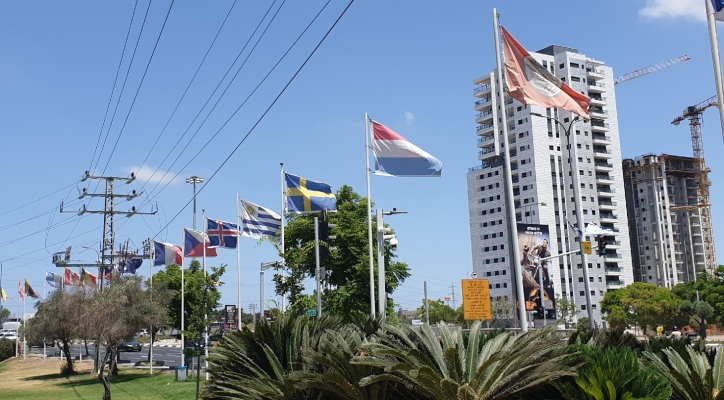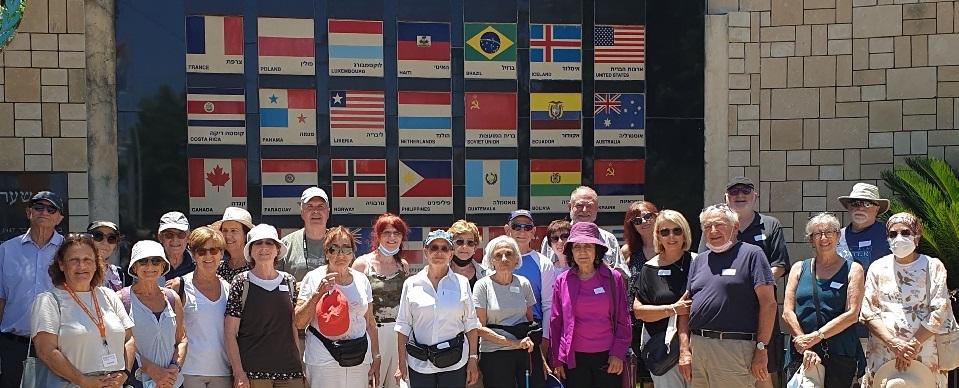Touring Israeli Historical Places with ESRA
Touring Israeli Historical Places with ESRA
Michal and I recently enjoyed a day trip organized by ESRA.
Our first stop was Rishon LeZion, population 250,000 people, the fourth largest city in Israel, located five miles south of Tel Aviv. Adina, our excellent guide, told us that Rishon was founded on July 31, 1882 by just 10 Jewish immigrants who came from Russia. It is the second Jewish farm settlement established in Ottoman-controlled Palestine during a period of national awakening throughout the West.
Rishon LeZion's name is taken from a Hebrew biblical verse that means, "First to Zion are they, and I shall give herald to Jerusalem." So how is it that Israel's second city is called the first (rishon) in Zion? The reason is that it was the first project with new immigrants to Palestine as part of the First Aliyah (1881-1903). Aliyah/Going up, a Zionist concept, is the ongoing nationalistic "ingathering" project which followed the middle 19th century immigration of religious Jews to Israel.
The flag of Israel was created and then raised for the first time in Rishon LeZion as part of a celebration of the village's 3rd anniversary in 1885. A year later, the Haviv Elementary School was established as the first modern school in the land, with Hebrew as the language of instruction. (At the time, this was controversial; German or French was customary.) The school is adjacent to the town's oldest synagogue, built despite opposition from the Ottoman government and financial distress.
Located just across the street from the school and synagogue is the Rishon LeZion Museum. Its mission is to present and pass on the town's local history as well as its contribution to creating Israel's national symbols and new cultural values: flag and anthem, Hebrew language, and native Israeli culture. We like these small museums which have an educational film, a limited number of exhibits, are usually located at an historic site, and give one a sense of the place. There was extra emphasis on funder Baron Edmond de Rothschild and on Naftali Herz Imber, who created the national anthem HaTikva (the hope), as well as the homestead on which the museum is located.
After leaving the center of town, we went to the very interesting Leaders' Park within the city's limits. This park is best known for the striking statues of some of Israel's most important leaders, such as David Ben-Gurion, Ze'ev Jabotinsky, Chaim Weizmann, Golda Meir, and Theodor Herzl, whose "dream" of a Jewish State predated Israel's independence by half a century. The statues are giant busts of the leaders, circling a pool with a striking sculpture in the middle representing the Menorah - the symbol of Israel. Nearby, there are large plaques with details of each of the leaders and a separate area dedicated to the countries which voted for the 1947 UN Partition Plan for Palestine. This vote led directly to Israel's Declaration of Independence five and a half months later in May 1948.
For me, the most interesting part of the day was in Rehovot to tour the Ayalon Institute, which Michal and I have visited a few times before, the first time on a synagogue sponsored trip in the early1980s. Located just south of Rishon LeZion, the 140,000 strong city was founded in 1890 by a group of pioneers from Warsaw. Like nearly all of the Jewish developments in Palestine, it was built on land that was purchased from its owners - often absentee landlords in Beirut, Damascus, or Cairo.










Comments